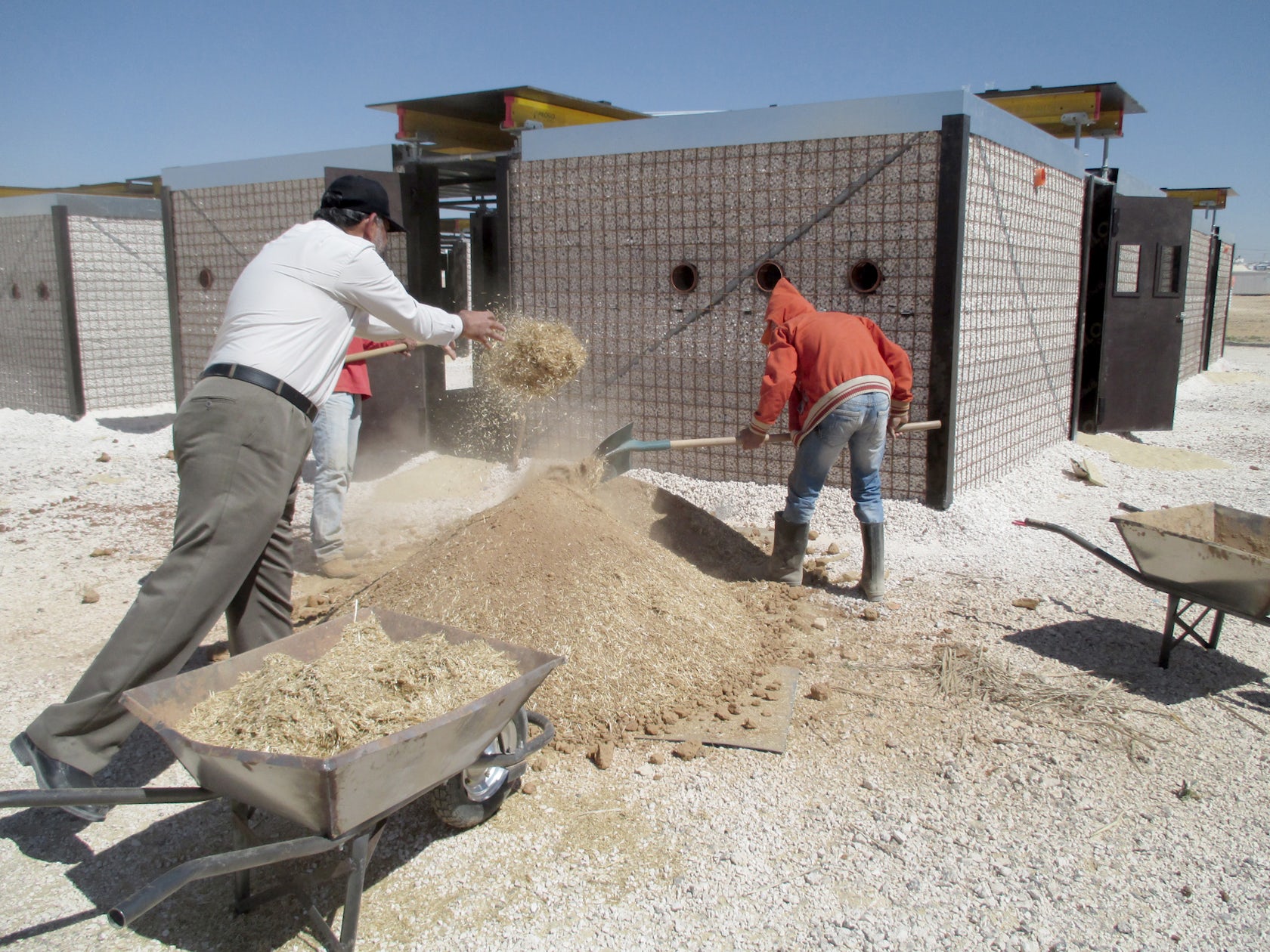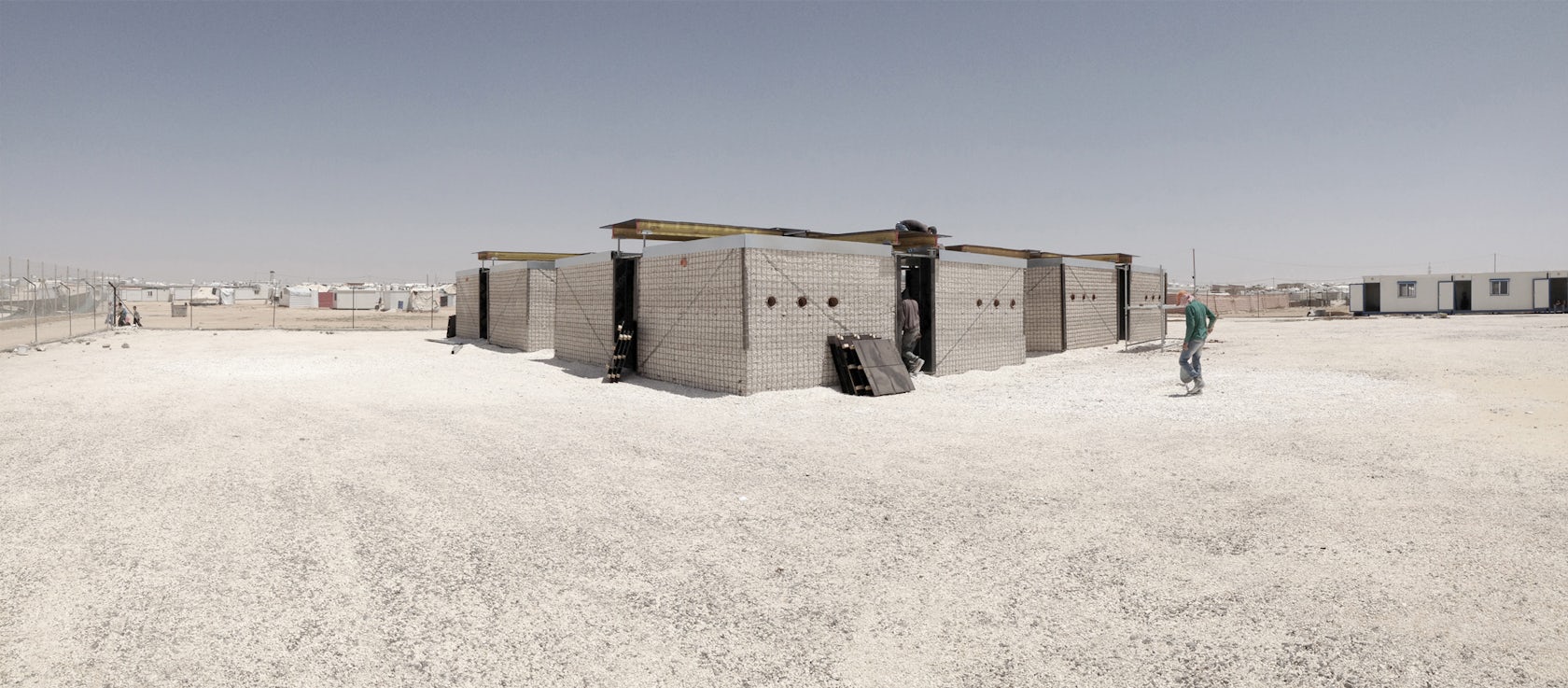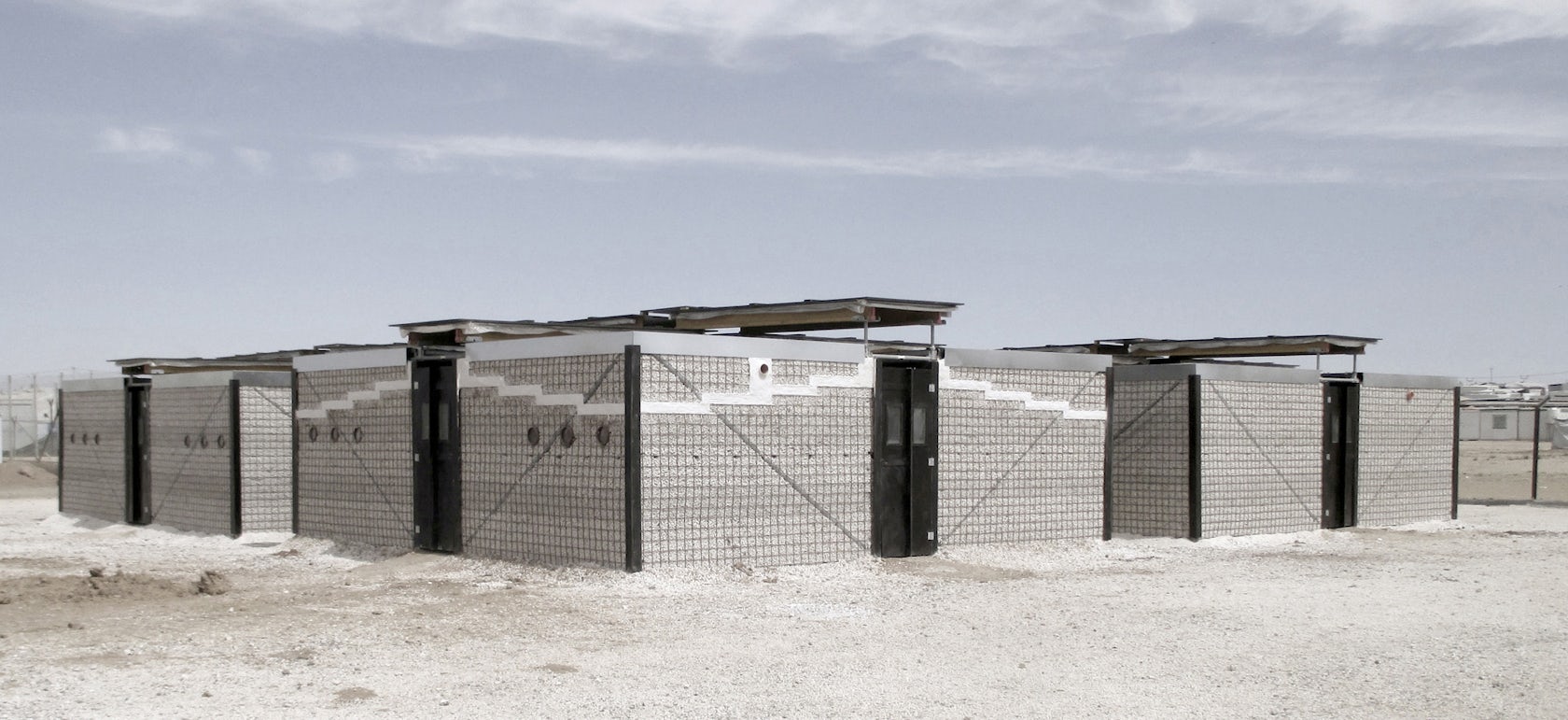“It’s a long story, and I’ll try to make it short … ” starts Luca Drigani when he begins to tell the origins of Pilosio Building Peace’s project RE:BUILD. The foundation, Pilosio Building Peace, is a humanitarian offshoot of Pilosio SpA, an Italian company started in 1961 that produces, and sells and provides, scaffolding and formwork for construction sites, maintenance and restoration works.


In 2011, the company launched the Building Peace Award, a program that recognizes individuals or companies whose work has improved living conditions and promoted peace among communities. In 2013, that prize was awarded to Cameron Sinclair — founder of Architecture for Humanity — for his work in the reconstruction and relief efforts of post-earthquake Haiti. The day after the ceremony, over breakfast, Sinclair turned to Dario Roustayan and Drigani and said to them: “You know, guys, you lead this big international gathering every year, talking about peace and humanitarian work … Why don’t you use your knowhow, your skills, your capabilities to really do something?”
This idea spurred from the fact that Pilosio’s main product, scaffolding tube — along with its involvement in the construction business — could make it a powerful actor in building quick solutions for housing crises around the world. Examining the ongoing refugee crisis, the group found its calling: “All these people around the world living in refugee camps are living in very, very horrible conditions, in plastic sheets, in tents … How can we have an impact on the lives of these people, [considering that] the issue of refugees — and, in general, of the homeless — is to become one of the biggest issues of the future?” asked Drigani.



Construction progress on two new educational centers in Zaatari built in partnership with Relief International; RE:BUILD pilot project, 2015
With Sinclair’s guidance, Pilosio joined the Clinton Global Initiative in 2014 and launched the official foundation Pilosio Building Peace with the objective of building 10 structures for communities displaced by the Syrian conflicts. Pilosio Building Peace identified Jordanian refugee settlements as a pertinent place to start its projects. Partnering with Save the Children Jordan, Relief International and the Jordan Hashemite Charity Organization — all under the umbrella of the Clinton Global Initiative — the organization has built two pilot projects in Jordan to date.
At the architectural end, Drigani qualifies the solution as a “potentially revolutionary system for the refugee camps and the homeless.” The construction of the structures relies on the use of scaffolding tubes — which Pilosio Building Peace buys from its parent corporation at manufacturing cost — as the skeleton of the building, with two very thin walls formed by thin layers of cement. The pilot projects pictured here relied on a slightly different building model, with metal mesh binding together a thick wall of sand or earth to create a solid standing structure.



Construction progress of the RE:BUILD pilot project in Zaatari, 2015
In the revised system, a void between the two thin cement walls allows the air to circulate while providing some insulation to the interior spaces: “The very competitive edge of this project is that it is stronger and more durable than the solutions that you [currently] see in the refugee camps. Because it is also very quick and easy to assemble, we have our technical supervisor onsite training the local community so the refugees themselves are in charge of assembling these modular structures like IKEA furniture.”
The role of refugees as builders is a key aspect of the project. Drigani explains that NGOs coming to do work on refugee settlements rarely include the community in their efforts. They arrive, they put up a building and then they leave. But Pilosio Building Peace involves the refugees themselves in the construction process, giving them a role and a purpose in the improvement of their habitats. “This is not just a structure; it’s about creating jobs and transferring knowhow to the local community,” adds Drigani.


Top: scale model for the Zaatari pilot school; bottom: construction details and material specifications
The current mission of Pilosio Building Peace is focused on building schools. The model comprises a 52-by-52-foot (16-by-16-meter) structure made up of four L-shaped classroom modules, with an internal courtyard to provide the children with a safe space to play. The structure allows for 200 kids to attend lessons, equating to 25 children per classroom, twice a day. But these buildings can also function as community centers, centers for women or health services.
According to Pilosio, the project demonstrates great potential to be further developed “because if you consider that a caravan can last for three years, four years, while our solution, our structure, can have a lifetime of 12 years, it’s very different.”


The finished school buildings
Throughout the process, Cameron Sinclair has been a close advisor to the Pilosio Building Peace Foundation, and he introduced another architect from Architecture for Humanity, Pouya Khazaeli, to the project. Originally from Iran, Khazaeli plans to move back to his birthplace to develop the system in refugee settlements there, too, as the country struggles to accommodate refugees, particularly those coming from Afghanistan. The next two to three months will see Pilosio Building Peace carrying out its new construction design throughout Jordanian refugee settlements, and the story continues …




